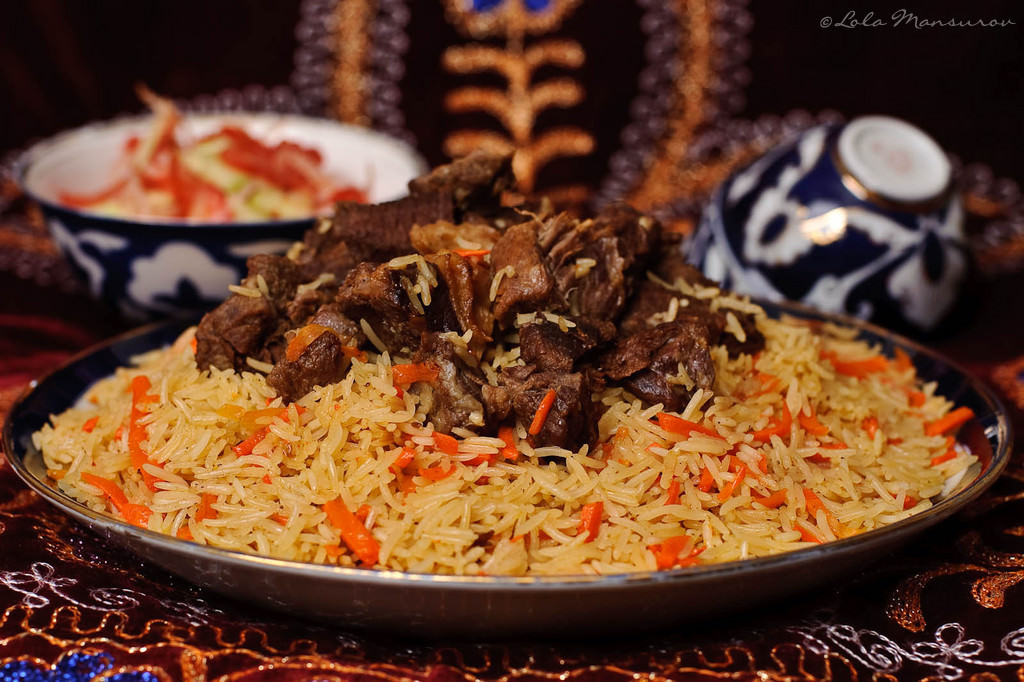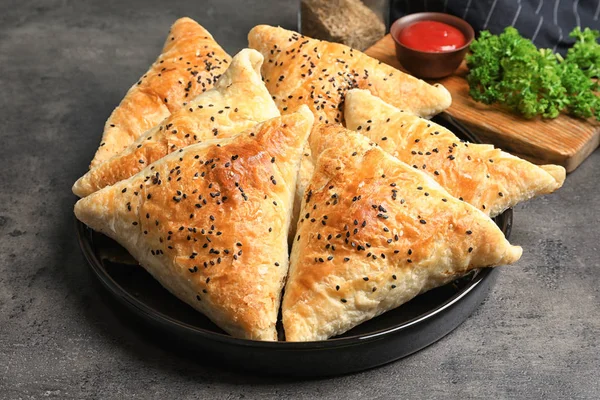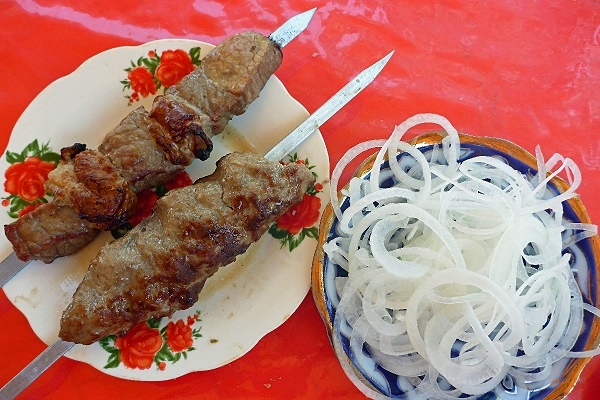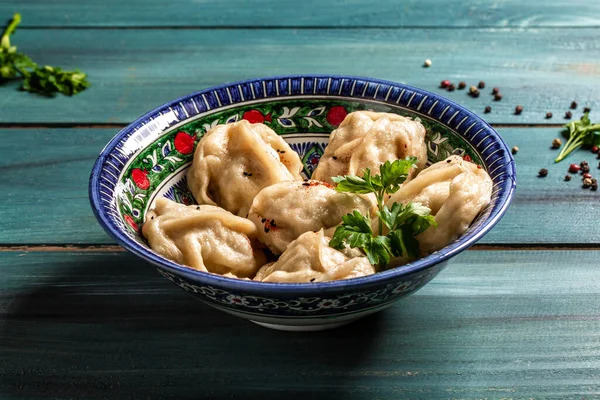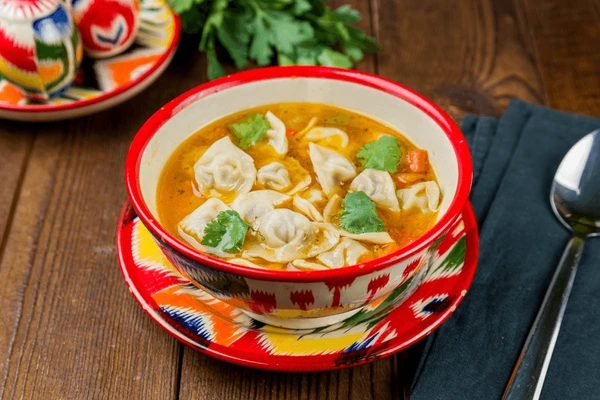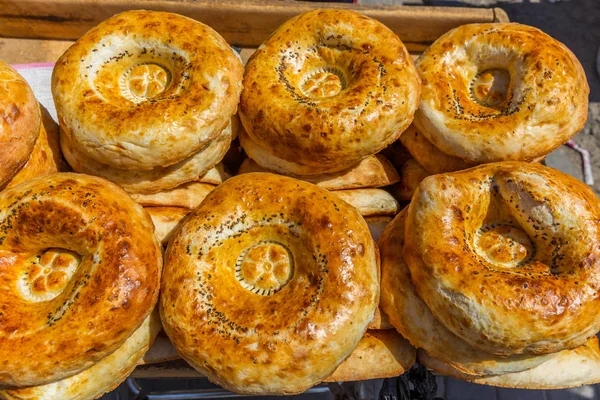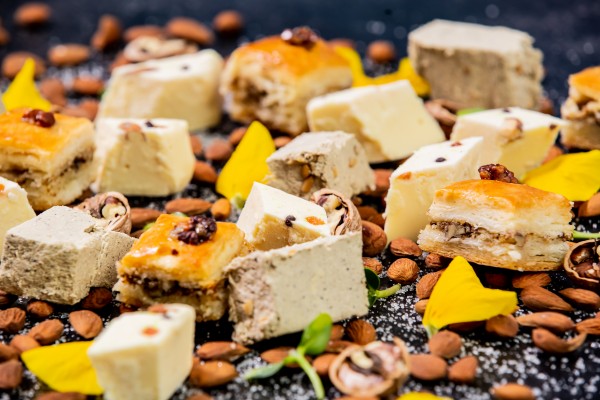.jpg)
Tasty Uzbek
CUISNE
Cusine
Uzbekistan is known also for its extraordinary hospitality and Uzbeks truly try to win the visitor's heart with friendly gestures that are related to eating or drinking.
Don't be suprised if locals invite you to their home for tea and even try to make sure you don't leave without havinga proper taste of the treats from a "dastarkhan" ,
which is the Central Asian dining ritual of enjoying rich culinary pleasures in the company of friends and family around a full table.
The Uzbek table most often has salads, plov, non bread, fresh seasonal fruits and sweets and first of all, tea.
Food in Uzbekistan
Pilov
Pilaff or plov (also known as Osh or Ash, most likely according to the city of Osh in Kyrgyzstan, that is considered the origin of the raddich rice valued in plov) is the main dish of traditional Uzbek cuisine. It is an oily, rice-based dish with pieces of meat, grated carrots, onions and sometimes, roasted garlic, chili and small hard-boild quail eggs.
Samsa
Samsa is a very popular dish in Uzbekistan known as the "Queen of Uzbek cusine". Samsa baked in a tandyr (claz oven), has specific taste and flavor. Samsa is filled with small pieces of meat, onion and some amount of fat from sheep's tail.
Shashlik
In Uzbekistan shashlik is very common dish that is sold in the streets, cafes, restaurabts and bazars all alike. In Uzbekistan shashlik is most common made from mutton or chicken or beef and served with onions, vinegar and tomato sauce. In order to make the shaslik more juicy, every second or every third piece in the skewer is often piece of fat.
Manty
These tasty Uzbek steamed dumplings are called Manti in Uzbekistan. Manti, ‘Manty‘ or ‘Mantu‘ is a true nomad dish. Manti typically cuisine of large dumplings stuffed with juicy meat & onion filling, then steamed in a special metal multi-layered Uzbek steaming pot, called kaskan.
Chuchvara
Chuchvara refers to a traditional dumpling dish that's sometimes also referred to as the Uzbek version of Russian or Italian ravioli. Its similar to common manti but smaller in size and traditionally boiled in soup with meat and vegetables.
Food in Uzbekistan
1. Pilav
Pilaff or plov is the main dish of traditional Uzbek cuisine. It is an oily, rice-based dish with pieces of meat, grated carrots,
onions and sometimes, roasted garlic, chili and small hard-boild quail eggs.
Here is a video where you can learn how to make pilav:
2. Samsa
Uzbekistan’s samsa is a savory pastry that is popular both as a snack and street food.
The pastry is made by filling a thin layer of dough with a mixture of spiced ground meat, onions, and sometimes potatoes or pumpkins.
Here is a video where you can learn how to make samsa:
3. Shashlik
If you like meat, then Uzbekistan’s shashlik is a must-try. Known for its simplicity and irresistible flavor,
shashlik consists of skewered and grilled pieces of marinated meat, like beef, lamb, chicken.
Here is a video where you can learn how to make shashlik:
4. Manty
Manti is a popular traditional dish in Uzbek cuisine. Manti is essentially dumplings, typically filled with a mixture of ground meat (such as lamb or beef), onions, and various seasonings.
Here is a video where you can learn how to make manty:
5. Chuchvara
Chuchvara, often called Uzbek dumplings, are small, bite-sized dumplings with minced meat (like beefs or lambs), chopped onions, and aromatic spices as their fillings.
Here is a video where you can learn how to make chuchvara:
Other food
1. Obi non
Your culinary journey wouldn’t be complete without trying Obi Non, one of the most important and versatile Uzbekistan foods that has become a staple among the locals.
Obi Non is a round flatbread characterized by its unique surface, decorated with intricate designs and patterns that are made by pressing the dough with a special tool called a ‘chekich’.
The bread is traditionally baked in a tandoor oven or on a flat griddle, making it slightly chewy on the surface but crispy on the bottom.
Obi non is so important to Uzbekistan cuisine that almost every town and region has their own distinct way of making it.
You can eat this bread with almost everything, like using it to scoop up stews and dips or use it as an accompaniment to other dishes.
2. Halva
Halva is well-known type of sweet in many Asian and Arabic countries and its name litelly translates as "sweets" from Arabic language.
It is normally made and sold in different size bricks and pieces, with crumbling texture that melts in your mouth, releasing an amazing combination of tastes.
Uzbekista has an astonishing amount of halva varieties, ranging from simple nut-based halvas to complex halvas with chocolate-creamy tastes to pistachio and even Snickers taste.
Sometimes they comprise of more than a dozen ingredients and are made with quite alaborated recipes.
Gallery
